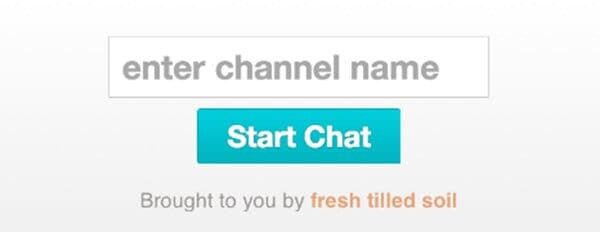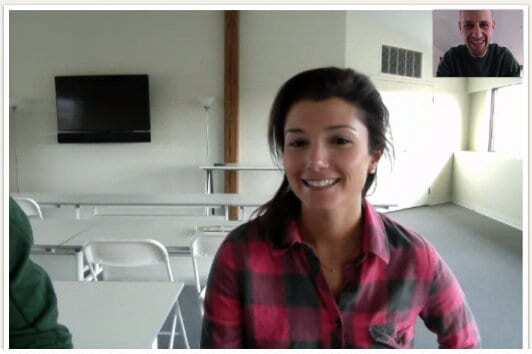This is what I was searching for! A firm that develops web and mobile applications for companies that sees real value in WebRTC.
I had my share of website development. It requires going to web development companies, sharing your vision and let them do their magic. It sometimes works and sometimes doesn’t, but it is a necessary part of most businesses today. It is also the place where I assumed the most interesting stuff can come out of with regards to WebRTC.
When fresh tilled soil published their WebRTC demos on Tech Crunch, my first reaction was – “s$&t – I should have been the one announcing them!”. The second one was – “time to ask for an interview!”.

So here we are. I had a long and interesting chat with Dmitry Dragilev, a Technology Evangelist at Fresh Tilled Soil – on their own WebRTC demo of course. You can read the results below.
What is Fresh Tilled Soil all about?
Good question. If you go to Fresh Tilled Soil homepage the first words you’ll read are: “Bloody brilliant UI Design for Web and Mobile Applications” and that actually sums up what we do pretty nicely in just a few words. We’ve been helping small startups and large companies such as General Electric, Microsoft, Walgreens, Hubspot, etc design their user interfaces for their apps, products and services for over 8 years now. We don’t just push pixels around, there is a lot of strategy research which happens well before we start physically designing anything.
Why use WebRTC at all?
WebRTC as you know stands for Real-Time Communications Technology and is built right into the web browser. It allows any developer to build video, audio or data communication applications that can run from any website and be used by any website visitor using a standard website browser without any need for Flash or Java addons and plugins. Never before has this been possible! It’s an exciting time right now.
Firefox and Chrome began supporting WebRTC only this year yet as you’ve been pointing out on your blog we’ve seen hundreds of companies already working on products based on this technology. Anything from an API service for WebRTC communication, to video chat through Twitter, to real time video chat and collaboration as you code the number of ideas for startups based on this technology is infinite.
Because real time communication can now be embedded into your website it gives businesses many new ways to communicate with their customers, employees and other companies. There are countless new ways to innovate with this technology.
What WebRTC capabilities have you been working with?
We have been dabbling quite a bit with WebRTC video chat and have recently created our own WebRTC video chat demo. We have also very recently released WebRTC video chat widgets. The widgets work very simply, anybody can take the following HTML embed code:
<!-- Begin Fresh Tilled Soil Video Chat Embed Code --> <div id="freshtilledsoil_embed_widget" class="video-chat-widget"></div> <script id="fts" src="http://freshtilledsoil.com/embed/webrtc-v5.js?r=FTS0316-CZ6NqG97"></script> <!-- End Fresh Tilled Soil Video Chat Embed Code -->
and add this code to any website or blog post. You’ll see the following widget on their website:

From here it’s dead simple to start a WebRTC video chat, just make up a name for a room, type it in and click start chat. Tell the other person to do the same and you’re all set.

We have also been dabbling with recording video stream WebRTC demo. When recording video we used the new javascript type arrays to save the streaming data and actually discovered pretty quickly that it is only possible to record the video and audio separately. So we ended up creating two instances of recording, one for the audio and one for the video that utilized the new javascript data types and recorded both streams simultaneously. We have a working demo now which we’ll unveil pretty soon on the page dedicated to our experiments.
How are your followers reacting to it?
You know people are pumped. Every time we come out with a new demo or experiment people tweet us, contact us, we just had someone come in to the office yesterday who is a WebRTC enthusiast, found us through one of these demos, we had a great chat. It’s exciting to see people embracing this technology and building new products with it.
How did you find the integration with WebRTC?
It’s been good. You know, just like with any new technology there are always issues, but that is to be expected. For example when we were trying to get the video chat to work on a mobile device (see video below) – the streaming to a mobile device added latency due to lag and limitations of surfing the net via mobile phone. This was a real problem for us. We solved this by making the resolution of streamed video reduced via a hash tag at the end of the URL. URL can optionally contain ‘#res=low’ for low resolution stream video & ‘#res=hd’ for high definition streaming video as an optional URL parameter. That seemed to work pretty well.
We’ve been dealing with firewall issues in specific instances where it did not work. While working with the new PeerConnection capability in Chrome we discovered a strict order of operations had to happen for it to connect and actually to work, we worked on this for a while to perfect when each thing happens, for example we learned that: “Once remote media starts streaming stop adding ICE candidates” and “Never create peer connect for answerer until you get the ‘Offer SDP’”.
What are your future plans for WebRTC?
We are working on a number of really neat new demos. One of them lets you record video and audio streams all within a browser without about plugins or addons. Another one is a voice recognition demo. Really cool stuff. We’ll be unveiling them on our demo experiments page.
–
The interviews are intended to give different viewpoints than my own – you can read more WebRTC interviews.
